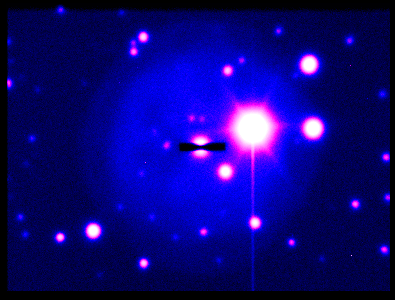FG Sagittae

FG Sagittae. Image: Keck Observatory.
FG Sagittae is one of the most extraordinary variable stars known; a supergiant, it lies in the constellation Sagitta at the center of a young planetary nebula (He 1-5), which it ejected a few thousand years ago, and has evolved significantly within a human lifetime. Its spectral type changed from B4Ia in 1955 to A5Ia in 1967 to F6Ia in 1972 and is currently K2Ib. Its magnitude, which was 13 in 1900, brightened to 9 over the next 60 years, before fading again to 14 in 1992 and a deep minimum of 16 in 1996. Since the early 1990s, its variability has been like that of an R Coronae Borealis star, dominated by dimming events and partial recoveries most likely produced by obscurations of the star by dust. The consensus view is that FG Sagittae is a final helium flash object, similar to Sakurai's Object, about to make a rapid transition to the white dwarf stage.


